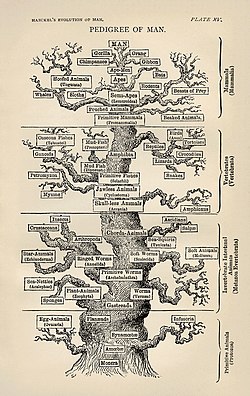Biomass
 From Wikipedia - Reading time: 15 min
From Wikipedia - Reading time: 15 min

| Part of a series on |
| Renewable energy |
|---|
 |
| Part of a series on |
| Sustainable energy |
|---|
 |
Biomass is a term used in several contexts: in the context of ecology it means living organisms,[1] and in the context of bioenergy it means matter from recently living (but now dead) organisms. In the latter context, there are variations in how biomass is defined, e.g., only from plants,[2] from plants and algae,[3] from plants and animals.[4] The vast majority of biomass used for bioenergy does come from plants and fecal matter. Bioenergy is a type of renewable energy that the bioenergy industry claims has the potential to assist with climate change mitigation.[5]
Uses in different contexts
[edit]Ecology
[edit]- Biomass (ecology), the mass of living biological organisms in a given area or ecosystem at a given time. This can be the biomass of particular species or the biomass of a particular community or habitat.
Energy
[edit]- Biomass (energy), biomass used for energy production or in other words: biological mass used as a renewable energy source (usually produced through agriculture, forestry or aquaculture methods)
- Bioenergy, energy sources derived from biological material
- Solid fuel, forms of bioenergy that are solid
- Biofuel
- Energy crops
Biotechnology
[edit]Biomass is also used as a term for the mass of microorganisms that are used to produce industrial products like enzymes and medicines.[citation needed]
Bioproducts
[edit]Examples of emerging bioproducts or biobased products include biofuels, bioenergy, biochar, starch-based and cellulose-based ethanol, bio-based adhesives, biochemicals,[7][8] bioplastics, biogas/biomethane,[9][10][11] and hydrogen from biogas.[12][additional citation(s) needed]
Biological wastewater treatment
[edit]In biological wastewater treatment processes, such as the activated sludge process, the term "biomass" is used to denote the mass of bacteria and other microorganisms that break down pollutants in wastewater.[13]: 243 The biomass forms part of sewage sludge.
Others
[edit]- Biomass (satellite) - an Earth observation satellite
- Waste biomass fibre - potential source for cleaner production of textiles
References
[edit]- ^ Houghton, R. A. (2008-01-01), "Biomass", in Jørgensen, Sven Erik; Fath, Brian D. (eds.), Encyclopedia of Ecology, Oxford: Academic Press, pp. 448–453, ISBN 978-0-08-045405-4, retrieved 2023-01-13
- ^ "Bioenergy – Analysis". IEA. Retrieved 2023-01-13.
- ^ "Bioenergy Basics". Energy.gov. Retrieved 2023-01-13.
- ^ "Biomass explained - U.S. Energy Information Administration (EIA)". www.eia.gov. Retrieved 2023-01-13.
- ^ "Renewable Energy Sources and Climate Change Mitigation. Special Report of the Intergovernmental Panel on Climate Change" (PDF). IPCC. Archived (PDF) from the original on 2019-04-12.
- ^ "biomass". Gold Book. IUPAC. 2014. doi:10.1351/goldbook.B00660. Retrieved 1 April 2024.
- ^ Viell, Jörn; Theis, Stefan; Götz, Ramona; Weber-Bernard, Alexandra; Echtermeyer, Alexander Walter Wilhelm; Lindmeyer, Martin. "Benefits and Challenges for Decentralized Use of Biomass as Feedstock for Chemicals". Chemie Ingenieur Technik. n/a (n/a): e00043. doi:10.1002/cite.202500043. ISSN 1522-2640.
- ^ Yu, Peng; Zhang, Rui (2025-06-01). "Synthesis of brønsted and lewis acidic solid catalyst for glucose conversion into 5-hydroxymethylfurfural". Reaction Kinetics, Mechanisms and Catalysis. 138 (3): 1569–1582. doi:10.1007/s11144-025-02812-4. ISSN 1878-5204.
- ^ Lohani, Sunil Prasad; Acharya, Renisha; Shrestha, Poushan; Shrestha, Sundar; Manisha, K. C.; Pradhan, Prajal (2024). "Sustainable biogas production potential in Nepal using waste biomass: A spatial analysis". Sustainable Development. 32 (5): 4770–4781. doi:10.1002/sd.2937. ISSN 1099-1719.
- ^ Röder, Lilli Sophia; Gröngröft, Arne; Dotzauer, Martin; Grünewald, Marcus; Riese, Julia (2025). "Economic and Ecological Evaluation of Demand Side Management in Biogas Production – A Dynamic Simulation Approach". Chemie Ingenieur Technik. 97 (1–2): 51–62. doi:10.1002/cite.202300157. ISSN 1522-2640.
- ^ Udaibah, Wirda; Anggoro, Didi Dwi; Prasetyaningrum, Aji; Bafaqeer, Abdullah; Amin, Nor Aishah Saidina (2025-06-01). "An enhanced production of biomethane from cellulose photoreforming driven by titania morphological modification". Reaction Kinetics, Mechanisms and Catalysis. 138 (3): 1605–1621. doi:10.1007/s11144-025-02821-3. ISSN 1878-5204.
- ^ Hirtreiter, Edwin; Gradel, Andy; Schmid, Hans-Peter; Wünning, Christopher; Rehfeldt, Sebastian; Klein, Harald. "Hydrogen from Biogas: Dynamic Modeling of an Integrated Shift Reactor". Chemie Ingenieur Technik. n/a (n/a): e12007. doi:10.1002/cite.12007. ISSN 1522-2640.
- ^ Von Sperling, M. (2015). "Wastewater Characteristics, Treatment and Disposal". Water Intelligence Online. 6: 9781780402086. doi:10.2166/9781780402086. ISSN 1476-1777.
 KSF
KSF
